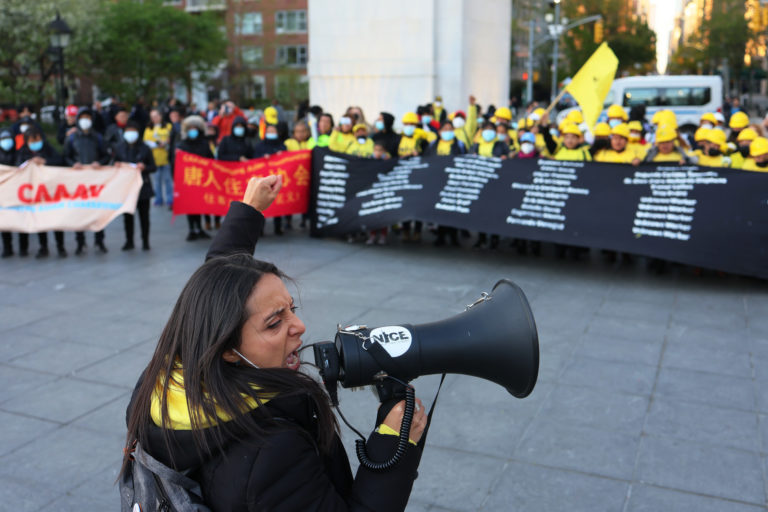Tyeshawn Clark,[1] is a 17-year-old high school student who lives with his mom and 2-year-old brother in Dorchester, MA. Every day after school Tyeshawn works at the Transformative Culture Project, a job placement he found through the Boston Private Industry Council, an employment program at his high school. This is the third job for Tyeshawn, who started working the summer after his freshman year of high school to gain experience. When Tyeshawn first started working he gave half his earnings to his mom to help around the house. Now his mom has a better-paying job and Tyeshawn gets to keep his earnings for things like back-to-school clothes and snacks. With school nearly out and summer quickly approaching, millions of teens will be entering the job market. Should these teens be paid the same wage as adult workers?
The debate about whether teens (16-19 year-olds) should be paid the same as adults has been going on for decades, but it has taken on new importance as more cities and states look to raise their own minimum wage above the federal level. Activists who support raising the minimum wage have, in some ways, undermined the importance of keeping teen wages on par with adult wages. Consider the messaging in Rhode Island: progressive activists argued for a higher minimum wage by focusing on the fact that minimum wage earners are older women trying to provide for their families. Advocates argued that the minimum wage supports adults and their families, not teens in the suburbs, reinforcing the idea that for teens, a high minimum wage is neither critical nor important – rather the most important part of a job for teens is the professional training. This messaging overlooks a number of arguments for why teens should receive the same minimum wage as adults. When states and cities raise the wage, they should do so without a teen wage carve out, and activists should not view a teen wage as a bargaining chip in the debate to raise the minimum wage. Trading away teen wages could hurt all workers in the long run.
Current Youth Minimum Wage Law
The 1996 Amendments to the Fair Labor Standards Act (“FLSA”) gave employers permission, under Section 6(g) to pay youth under 20 years-old a minimum wage of $4.25/hour for the first 90 calendar days of employment. While the federal minimum wage has been raised four times since 1996, the youth wage has stayed exactly the same. However the youth minimum wage, like the federal minimum wage, is meant to be a floor and if a state or municipality chooses to raise its minimum wage, teens will also benefit unless legislators explicitly choose to carve out exceptions for youth or training wages.
As of January, 29 states plus the District of Columbia have a minimum wage that is higher than the federal rate. Many states either are debating or have debated whether to keep the federal youth-wage model when they raise their own state’s minimum wage. Some states like Massachusetts, do not distinguish between teen and adult wages. While Minnesota’s law explicitly differentiates between youth, training, and adult wages. This past election cycle, South Dakota voters resoundingly rejected a statewide referendum that would have established a youth wage. Two Rhode Island state senators have proposed an ‘opportunity wage’, just as Governor Raimondo looks to raise the wage to $10.50/hour. In Washington, where voters approved a ballot initiative to raise the minimum wage, a Republican state senator introduced three bills to roll back wage increases, including one targeting teen wages.
The Youth Wage and Youth Unemployment
For decades, the youth wage has been suggested as a way to reduce youth unemployment rates. The teen unemployment rate (16-19 year olds) has been steadily increasing, even over the summer months. The high for teen summer employment was in 1978 with 58% of teens having summer jobs. The all time low was in 2010 and 2011, during the heart of the recession, when only 30% of teens were employed over the summer.
Supporters of a teen wage tie high youth unemployment to increases in the minimum wage. The argument is that a higher minimum wage has the most negative impact on low-skilled workers, because as wages go up, employers are going to hire fewer employees, especially teens who need to be trained and are a riskier bet. A higher minimum wage creates a higher barrier to entry for teens and low-skilled labor.
Writing in support of a youth wage in Washington state, Erin Shannon argues: “a training wage for teen workers would provide employers with a much-needed incentive to take a chance on hiring young, unskilled and inexperienced job seekers. Such a policy would reduce the harm the state’s new minimum wage will have on job opportunities now, and in the future, for our state’s young people.”
However, there is no consensus or clear evidence that a higher minimum wage is to blame for the high youth unemployment rate. The youth employment rate has been consistently falling since the 1980s, even after the 1996 amendment to the FLSA, which allowed for a youth training wage. A new wave of research done after the recession indicates that higher wages do not in fact hurt teens. The Department of Labor suggests a number of alternative hypotheses for why the youth employment rate is falling, including higher school attendance, more summer students, and higher education costs which makes the trade-off of working to save for college less attractive.
The Case for Equal Pay for Teens
There are other reasons that advocates in favor of raising minimum wage should be wary of ‘teen wage,’ or ‘youth wage,’ proposals.
First, a youth wage undermines adult workers. While youth wage advocates argue that teens cannot actually perform the same job as an adult, the reality is that teen workers are concentrated in retail and hospitality sectors where they perform substantially the same functions as an adult – unions understand that cheap teens mean problems for adults looking for work.
Second, a youth wage equates age with value, which is not necessarily accurate. As Nebraska State Sen. Adam Morfeld stated during a debate over the youth wage: “As a grocery store manager, I had lazy and inexperienced employees that were over the age of 19, and I had some that, yes, were under the age of 19…We shouldn’t be characterizing a certain class of individuals as more lazy or less experienced. We should be judging them on their work ethic.” Consider Tyeshawn Clark again. By this summer Tyeshawn will have worked in three different jobs, and yet he is still only 17. Under the FLSA Tyeshawn could be paid a youth wage for 90 days at his new job – essentially his entire summer – due to his age, but not experience.
Third, a teen wage would incorrectly assume that teens do not “need” or deserve a higher wage. One supporter of the youth wage argued that there is “a difference between an entry-level job, where someone is there to gain experience…versus the issue that the Democrats are trying to push with a livable wage.” The common thought is that teens are only working for the experience and not for the livable wage. But Consider Tyeshawn again – when he first started working he gave half his earnings to his mom to help around the house. Teens are often working to pay bills or debt, save for college, and otherwise help their families. A 2013 study by the Center for Labor Market Studies found that 57% of participants in youth jobs programs in Boston gave some of their wages to their parents. Employers will hire as many employees as they need – the value to the employer does not change as long as the worker is performing the same job, so why should it matter what the employee spends his paycheck on?
[1] Thank you to Cara Berg Powers, from the Transformative Culture Project for putting me in touch with Tyeshawn Clark, and thank you to Tyeshawn Clark, for graciously taking time out of his weekend to speak with me.









Daily News & Commentary
Start your day with our roundup of the latest labor developments. See all
December 22
Worker-friendly legislation enacted in New York; UW Professor wins free speech case; Trucking company ordered to pay $23 million to Teamsters.
December 21
Argentine unions march against labor law reform; WNBA players vote to authorize a strike; and the NLRB prepares to clear its backlog.
December 19
Labor law professors file an amici curiae and the NLRB regains quorum.
December 18
New Jersey adopts disparate impact rules; Teamsters oppose railroad merger; court pauses more shutdown layoffs.
December 17
The TSA suspends a labor union representing 47,000 officers for a second time; the Trump administration seeks to recruit over 1,000 artificial intelligence experts to the federal workforce; and the New York Times reports on the tumultuous changes that U.S. labor relations has seen over the past year.
December 16
Second Circuit affirms dismissal of former collegiate athletes’ antitrust suit; UPS will invest $120 million in truck-unloading robots; Sharon Block argues there are reasons for optimism about labor’s future.